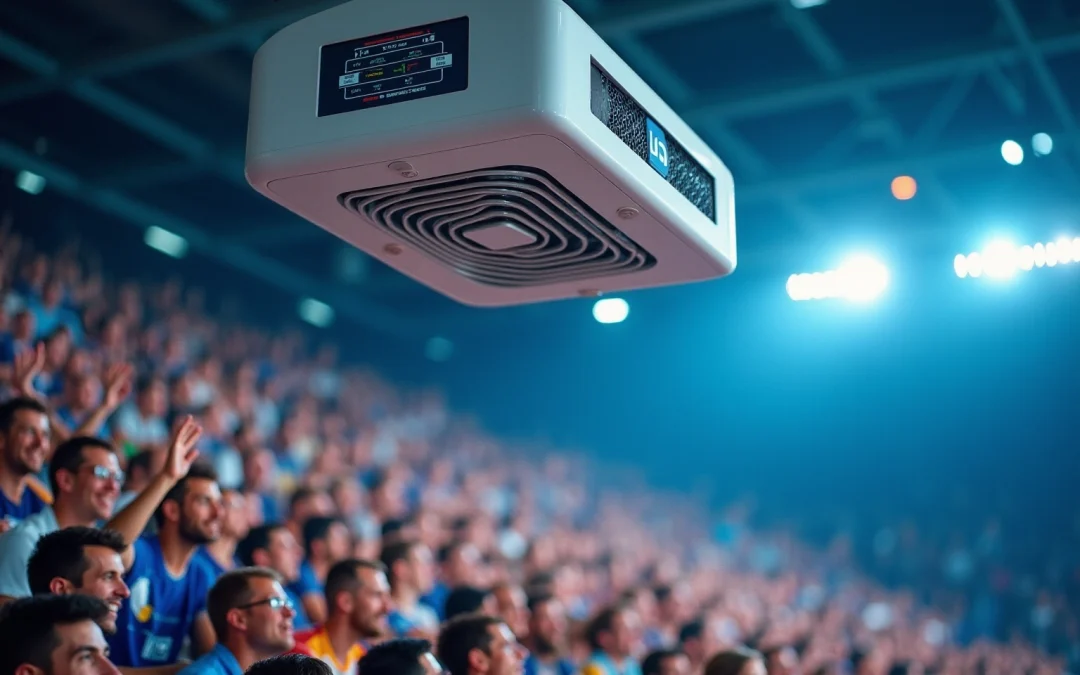Overview
High-tech fans represent advanced cooling systems meticulously engineered to optimize temperature control and airflow within sports venues, thereby significantly enhancing comfort for both spectators and athletes. This article highlights their evolution and critical features, including energy efficiency and smart technology integration, which are essential for sustaining optimal conditions during events. Notably, their effectiveness is underscored by the marked reduction in dissatisfaction rates observed during the 2022 FIFA World Cup, illustrating their pivotal role in modern sports environments.
Introduction
High-tech fans have fundamentally transformed the spectator experience in live sports, turning arenas into comfortable sanctuaries even under the harshest climatic conditions. These sophisticated cooling systems not only elevate the enjoyment of the game but also significantly contribute to optimizing athlete performance. As the demand for enhanced spectator comfort continues to rise, it prompts an inquiry into the evolution of these innovations and the emerging trends in high-tech fan technology within the sports industry.
Define High-Tech Fans and Their Role in Sports
High-tech fans are advanced cooling devices specifically designed for temperature control in sports venues, including stadiums and arenas. These high-tech fans play a crucial role in optimizing airflow and temperature regulation, significantly enhancing the comfort of both spectators and athletes. By maintaining optimal conditions, they not only improve the overall experience for attendees at live events but also bolster player performance.
Equipped with innovative features such as variable speed controls, energy-efficient motors, and smart sensors, these devices dynamically adjust airflow based on real-time environmental conditions. For instance, during the 2022 FIFA World Cup in Qatar, advanced cooling configurations were instrumental in reducing the predicted percentage of dissatisfied spectators from 100% to as low as 19% in certain areas, while maintaining spectator tiers at an average temperature of 22°C. Furthermore, the highest expected percentage of dissatisfied thermal satisfaction for the pitch decreased from 100% to 63%. This illustrates the in addressing the challenges of energy usage and thermal comfort in warm regions.
Additionally, studies have demonstrated that integrating air curtains with cooling systems can significantly lower temperatures on the pitch by up to 15°C and in spectator areas by 14.6°C. Such advancements underscore the importance of high-tech fans in contemporary athletic venues, making them essential for enhancing spectator comfort and ensuring a favorable event experience.
As noted by Ben Hughes, Qatar faces considerable challenges in minimizing energy consumption for air-conditioning, with the maximum energy consumption of the optimal cooling scenario reaching 108 MWh per match. These elements emphasize the pivotal role of advanced ventilators in sustaining comfort and energy efficiency.
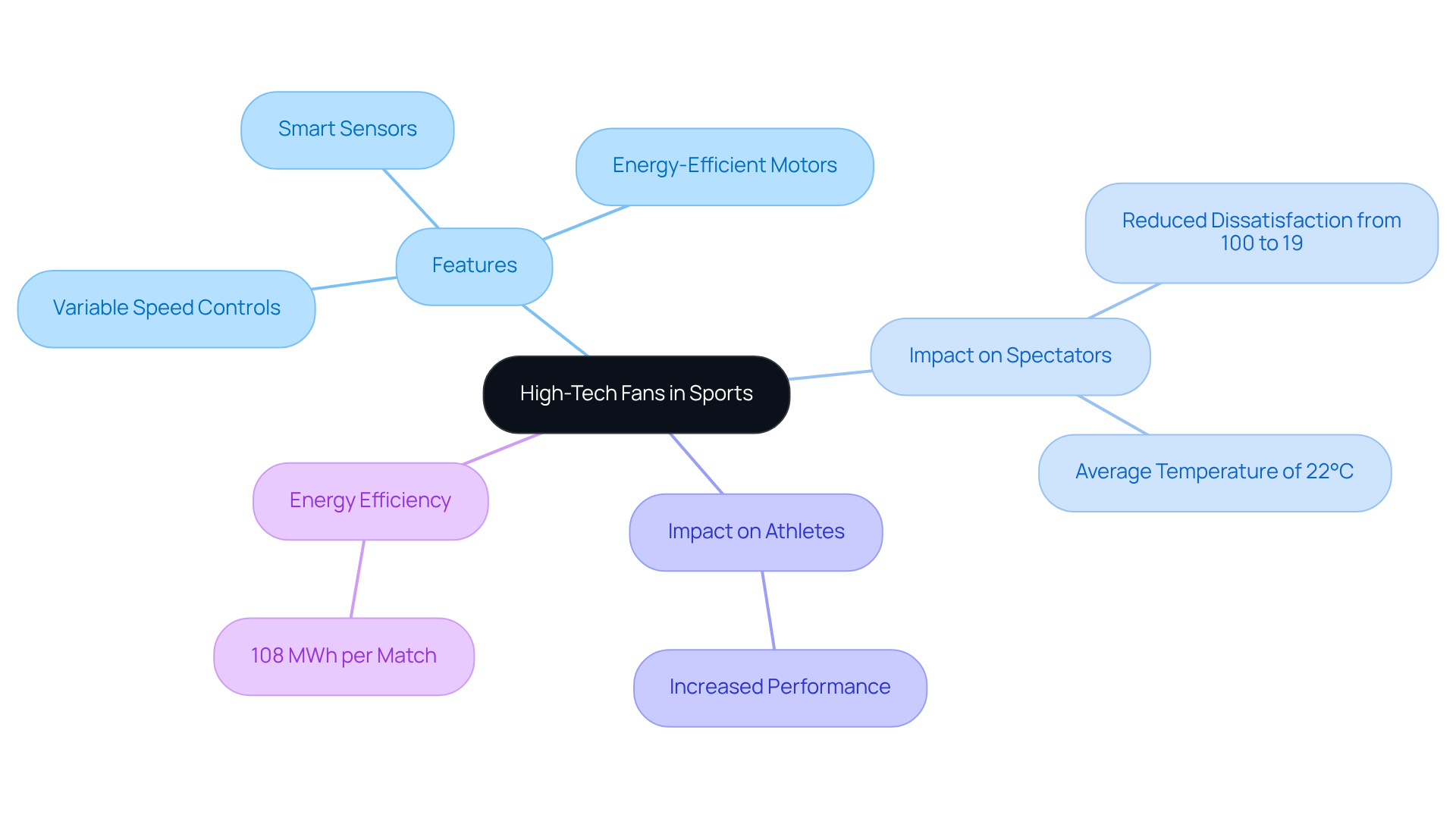
Explore the Evolution of High-Tech Fans in Sports
The evolution of advanced cooling devices in sports can be traced back to the initial designs of stadiums, where basic ventilation systems were first employed. As the demand for enhanced spectator comfort grew, the technology of high-tech fans advanced correspondingly. By the late 20th century, the advent of electric devices represented a significant leap forward, facilitating improved airflow and energy efficiency. Entering the 21st century, we have seen a notable integration of smart technology, particularly with high-tech fans that now boast IoT capabilities for remote monitoring and control. This progression mirrors broader trends within the sports industry, where increasingly plays a crucial role in enhancing fan engagement and operational efficiency.
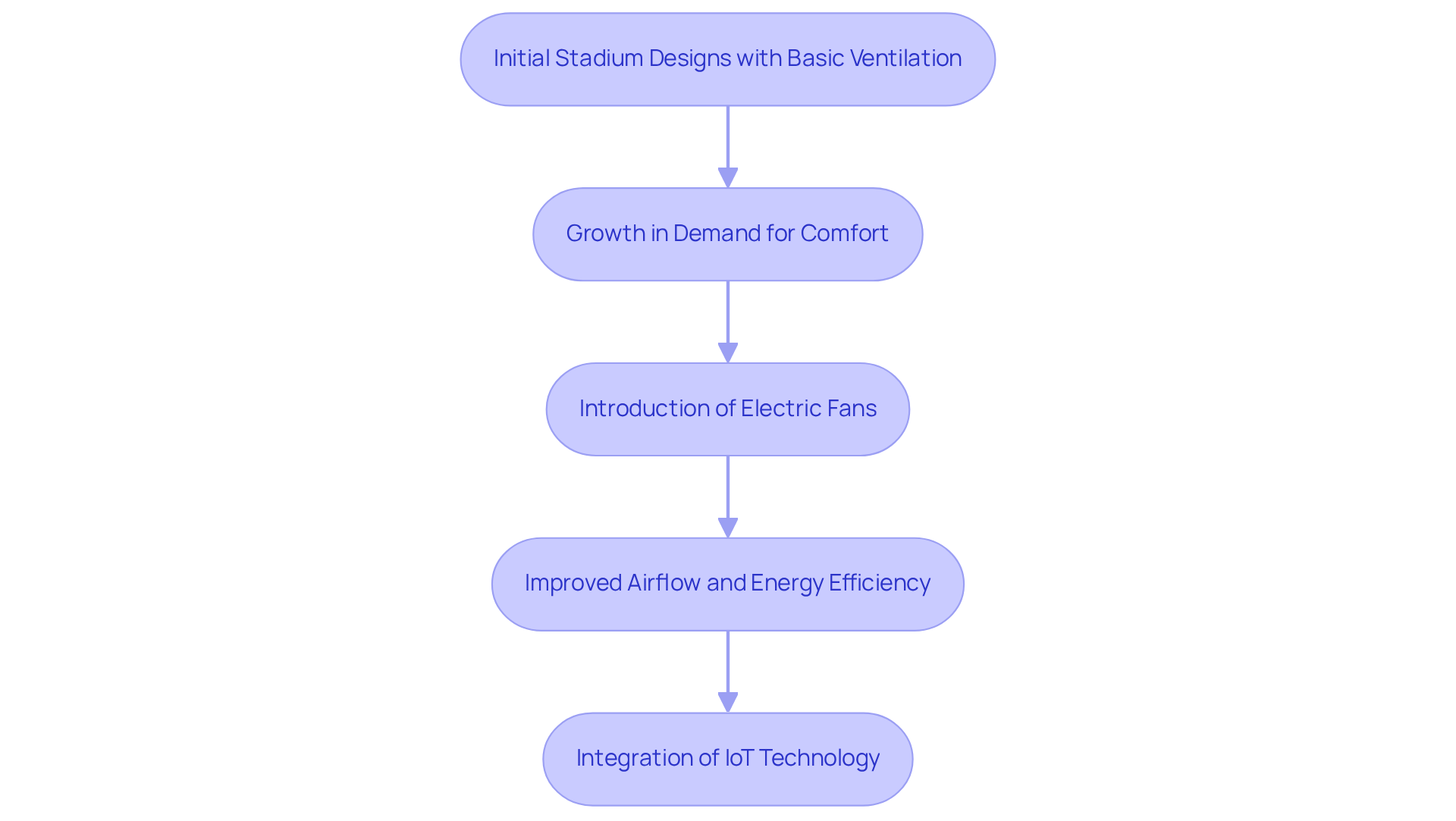
Identify Key Features of High-Tech Fans
The essential characteristics of high-tech fans include:
- Energy efficiency
- Adjustable speed regulation
- Smart technology integration
Energy-efficient motors, in combination with high-tech fans, significantly reduce power consumption, making these devices both environmentally friendly and cost-effective. in high-tech fans enables real-time adjustments based on temperature and occupancy levels, ensuring optimal airflow while minimizing unnecessary energy expenditure. Furthermore, many advanced devices, including high-tech fans, are equipped with smart sensors capable of communicating with building management systems, facilitating automated adjustments and predictive maintenance. These features not only enhance the comfort of spectators but also support the sustainability objectives of sports organizations.
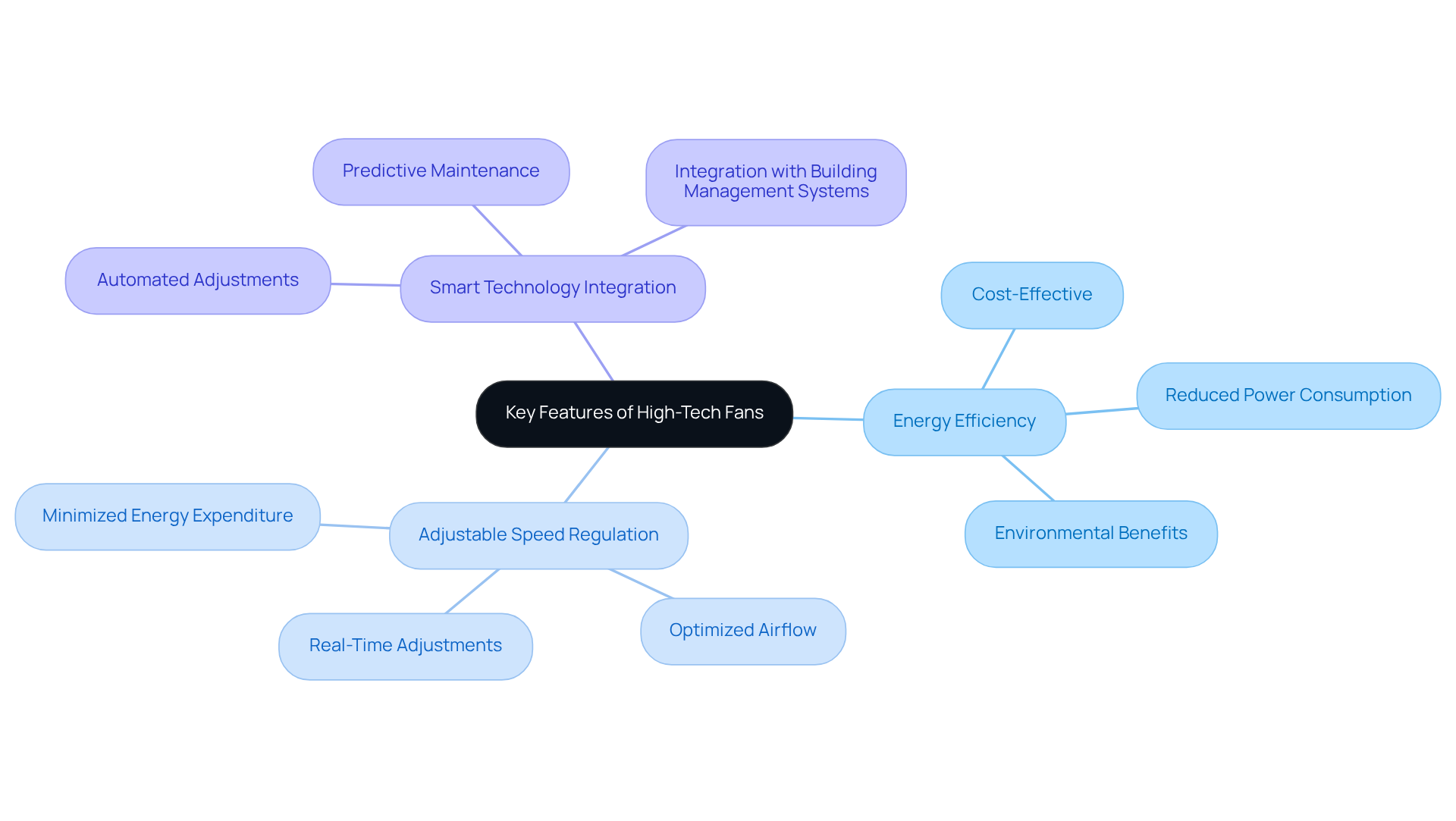
The Impact of High-Tech Fans on Fan Experience
High-tech fans play a crucial role in enhancing the spectator experience by creating a comfortable atmosphere during events. These high-tech fans are adept at maintaining ideal temperatures, effectively preventing heat-related discomfort and allowing spectators to focus on the game rather than the weather. In fact, comfort, perspective, entertainment, and ambiance are 50% more significant than other factors for sports enthusiasts, underscoring the critical importance of advanced technology in elevating the overall experience.
Moreover, the silent operation of contemporary devices ensures that the excitement of the event remains undisturbed by noise, contributing to a more enjoyable ambiance. As one specialist noted, “Thermal well-being can influence the enjoyment of spectators and the performance of athletes,” which highlights the necessity of effective temperature regulation.
Understanding the regarding thermal comfort, as discussed in the case study ‘Personal Factors in Stadium Comfort,’ is essential for fostering an inclusive environment. As athletic facilities increasingly prioritize audience satisfaction and engagement, the role of high-tech fans becomes even more crucial in delivering unforgettable experiences.
Effective stadium design, as detailed in the case study “Designing Great Stadiums,” further contextualizes the significance of these cooling systems. Additionally, addressing solar and glare management is vital for enhancing thermal comfort, ensuring that spectators can fully immerse themselves in the event without environmental distractions.
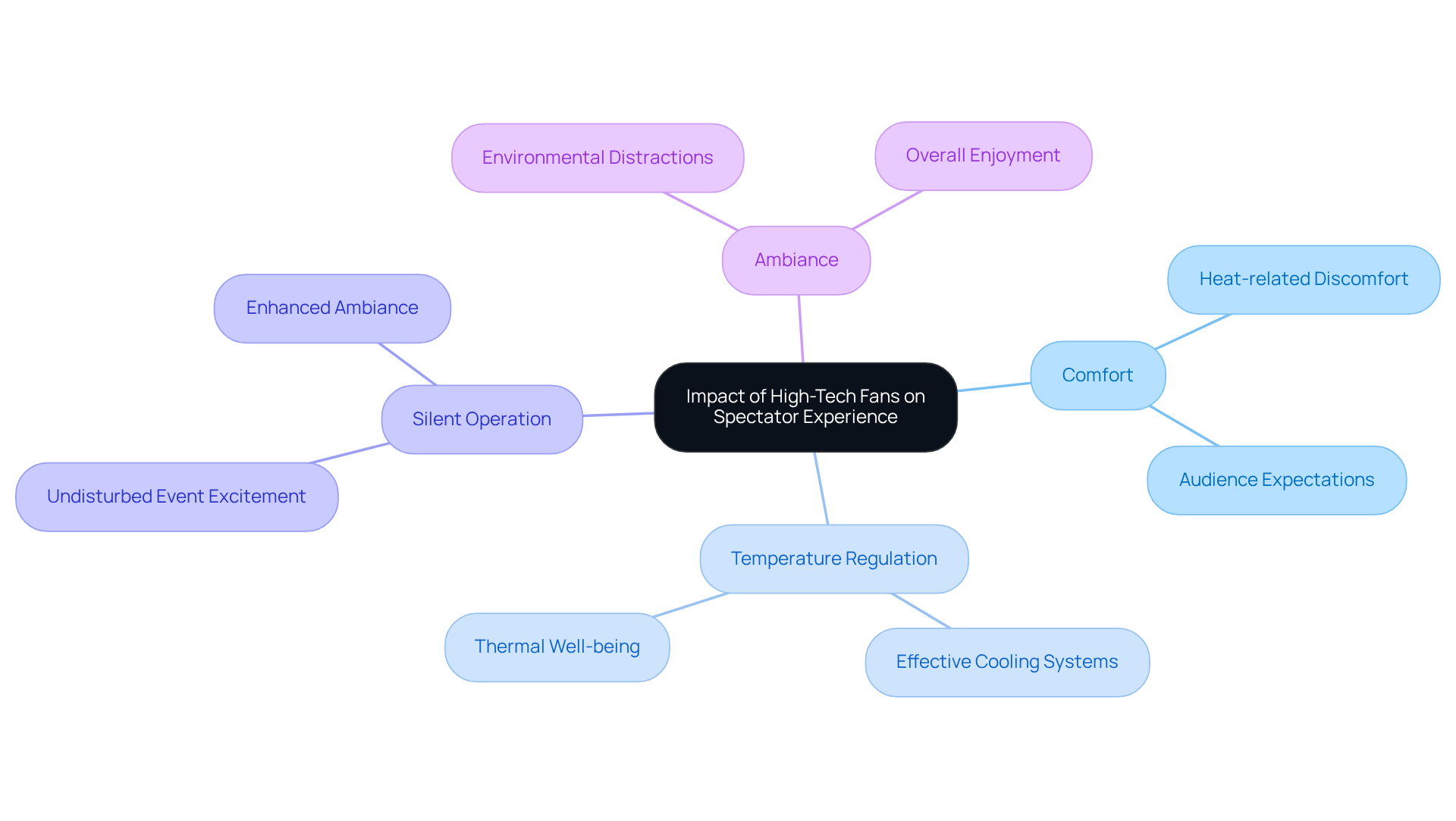
Future Trends in High-Tech Fan Technology
The future of athletics is on the verge of remarkable advancements due to high-tech fans in advanced fan technology. Enhanced AI algorithms for predictive airflow management are set to transform how stadiums maintain optimal conditions, integrating seamlessly with smart building systems. Innovations in materials science are anticipated to produce quieter and more efficient fan designs, significantly elevating the spectator experience.
As sustainability takes center stage, the adoption of renewable energy sources and advanced energy recovery systems in fan technology is poised to become increasingly prevalent. Notably, clubs such as Liverpool, Brentford, and Arsenal are making substantial strides in sustainability, showcasing the practical application of these improvements within the athletic sector.
These advancements not only promise to but also align with the industry’s broader commitment to fostering sustainable and visitor-friendly environments. Moreover, addressing the leadership gap in sports sustainability is essential for overcoming challenges and capitalizing on opportunities associated with these technologies.
Collectively, these trends will facilitate the transformation of stadiums into climate-controlled environments, ensuring a comfortable experience for fans while championing sustainability.
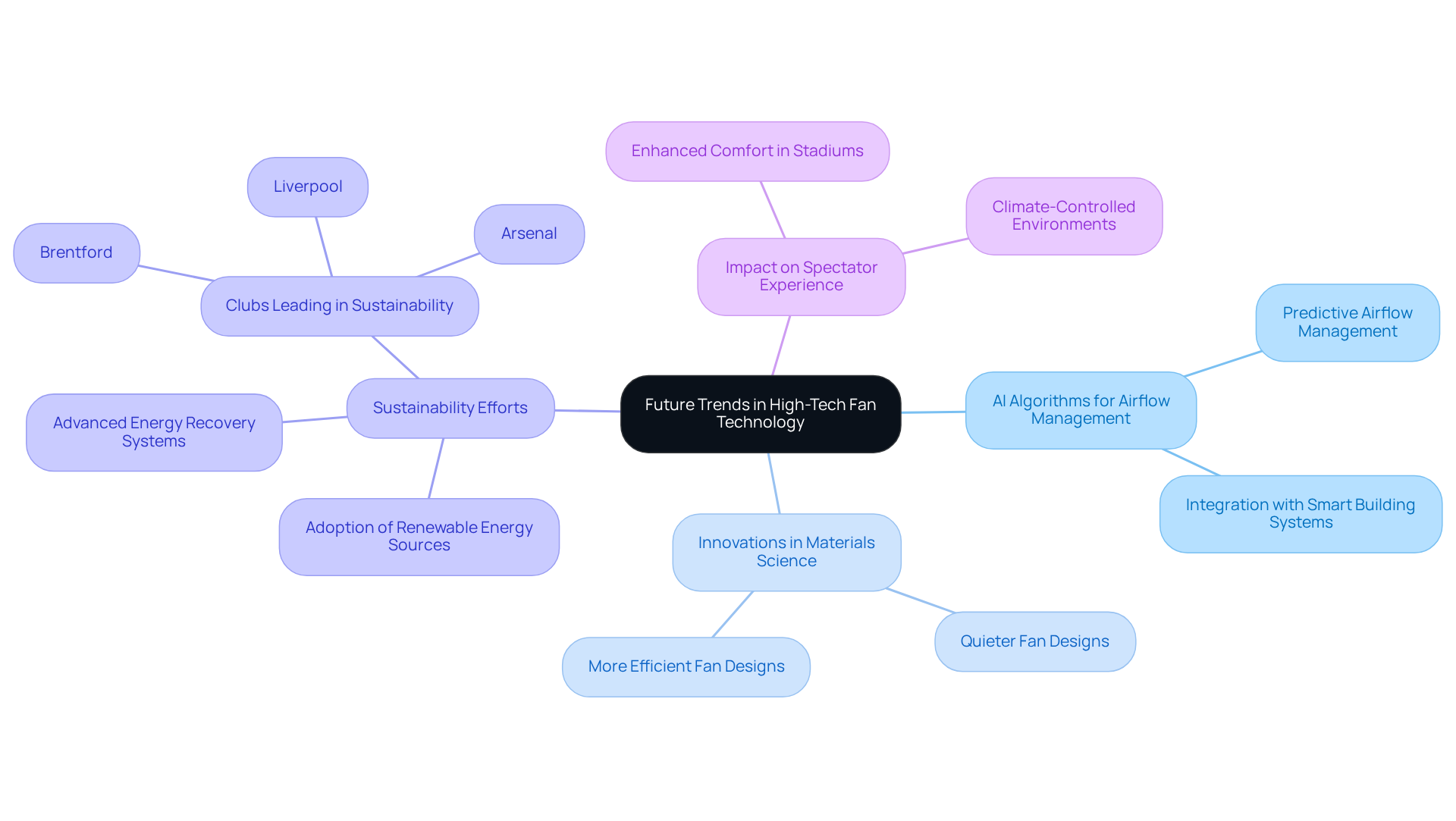
Conclusion
High-tech fans have emerged as a pivotal innovation in the sports industry, fundamentally transforming temperature control in stadiums and arenas. By enhancing airflow and maintaining optimal conditions, these advanced cooling devices significantly improve comfort for both spectators and athletes, thereby elevating the overall experience during live events.
This article delves into the various features of high-tech fans, including:
- Energy efficiency
- Adjustable speed controls
- Smart technology integration
Notable advancements are highlighted, such as the successful implementation of these systems during significant events like the 2022 FIFA World Cup, where they drastically reduced thermal discomfort among attendees. Furthermore, the evolution of fan technology reflects broader trends within the sports industry, showcasing how innovation consistently enhances fan engagement and operational efficiency.
As the industry progresses, the integration of:
- AI
- Renewable energy sources
- Advanced materials
promises to further revolutionize high-tech fan technology. Emphasizing sustainability alongside spectator comfort, these developments are not merely about improving experiences; they are about creating a more environmentally friendly future for sports venues. The significance of high-tech fans in modern sports cannot be overstated, as they play a crucial role in ensuring that fans enjoy their favorite events in a comfortable and engaging atmosphere.
Frequently Asked Questions
What are high-tech fans and what role do they play in sports?
High-tech fans are advanced cooling devices designed for temperature control in sports venues, such as stadiums and arenas. They optimize airflow and temperature regulation, enhancing comfort for both spectators and athletes, and improving the overall experience at live events.
What features do high-tech fans have?
High-tech fans are equipped with features like variable speed controls, energy-efficient motors, and smart sensors that allow them to dynamically adjust airflow based on real-time environmental conditions.
How effective were high-tech fans during the 2022 FIFA World Cup in Qatar?
High-tech fans significantly reduced the predicted percentage of dissatisfied spectators from 100% to as low as 19% in certain areas, maintaining an average temperature of 22°C for spectators. For players, the percentage of dissatisfied thermal satisfaction on the pitch decreased from 100% to 63%.
What impact do air curtains have when integrated with cooling systems?
The integration of air curtains with cooling systems can lower temperatures on the pitch by up to 15°C and in spectator areas by 14.6°C, enhancing thermal comfort in sports venues.
What challenges does Qatar face regarding energy consumption for air-conditioning?
Qatar faces significant challenges in minimizing energy consumption for air-conditioning, with the maximum energy consumption of the optimal cooling scenario reaching 108 MWh per match.
How have high-tech fans evolved over time?
The evolution of high-tech fans began with basic ventilation systems in early stadium designs. As the demand for spectator comfort increased, technology advanced, leading to electric devices in the late 20th century and the integration of smart technology, including IoT capabilities, in the 21st century.
How does the evolution of high-tech fans reflect broader trends in the sports industry?
The evolution of high-tech fans mirrors broader trends in the sports industry where technology increasingly enhances fan engagement and operational efficiency.

